The reason why many people choose to build their own house is that it is the cheapest way of doing it.
The choice of building materials usually depends on where you live.
Local materials are generally cheaper and natural building is about using materials that are available wherever you build.
So let’s look back through history at these techniques of ancient home building for ideas that can inspire you to build your dream one cheaply.
The Rondavel
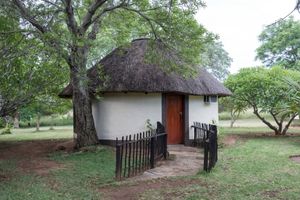 The first ancient house we will look at originated in Africa, where natural resources provided humanity with grass in large grassland areas called savannahs.
The first ancient house we will look at originated in Africa, where natural resources provided humanity with grass in large grassland areas called savannahs.
Rondavels were constructed by nomadic people, using available grass, wood, and mud.
Long wooden posts were fixed in the ground in a circular shape to provide shelter from animals at night, and grass-covered roofs were constructed in a pointed, cone shape. Then grass or basketweave was applied to the spaces in between. Frequently, mud was applied over this, which baked quickly.
Related: How to Get a Year Supply of Firewood for $10!
How to build one? Place long wooden posts placed vertically in a circular shape. Weave a wall from twigs, grass, or reeds and cover this with mud, and allow it to dry quickly in the sun. This type of house can be adapted for winter use with good insulation.
The Cob House
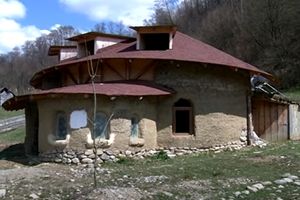 The oldest cob house still standing may be 10,000 years old, so you know there is a long tradition and it is worthwhile. Besides the wooden structure, to which you apply the cob mixture, the ingredients are clay, sand, and straw.
The oldest cob house still standing may be 10,000 years old, so you know there is a long tradition and it is worthwhile. Besides the wooden structure, to which you apply the cob mixture, the ingredients are clay, sand, and straw.
Cob walls can be as thick as you decide and provide excellent thermal mass.
If they are built to passive principles it can save on heating costs too, because, in winter, the walls can store energy to keep you warm whereas in summer, it keeps cool. If you want to learn more about cutting down on electricity bills, here is how to produce your own electricity in your backyard.
How to build one? Build a basic structure with logs, branches, planks of wood, or whatever is available in your area. This is where you apply the cob mixture. The cob mixture uses 3 parts sand, 1 part clay, and 1 part straw and you mix these ingredients together on a flat surface like a blanket, sacking or even a polythene bag.
Many cob builders enjoy stamping the mixture themselves to soften it up. Lift the edges of the blanket and roll the mix together and then apply this wet to the wooden structure you have prepared. You know it’s good to use if you take out a lump and there is no obvious sand showing.
The Hogan – The Wooden Navajo Native American Style
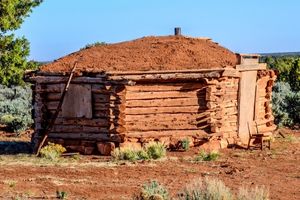 These houses were the favorites of the Navajo Nation and its design was based on the environment in which they lived.
These houses were the favorites of the Navajo Nation and its design was based on the environment in which they lived.
They are usually wood structures coated with mud, which makes them incredibly energy efficient. They keep cool in the hot summers, while in winter, a fireplace keeps the family warm.
Related: 13 Ways To Keep Your House Cool In The Summer
Since 2001, the Navajo Nation, the US Forestry Service, and the University of Northern Arizona have been collaborating to make new homes based on the traditional ancient design.
How to build one? Use wood or stone as the initial structure and the roof could be made of mud or bark. You may not need to self-build. Check locally if these energy-efficient homes are being built near you if you live in Arizona.
Wattle And Daub House
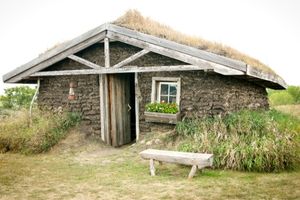 Wattle and daub is a method adds one different ingredient to cob. This method is used to make walls and buildings, utilizing clay, water, wet soil, sand, and straw and a free material often available close to farmland: animal manure.
Wattle and daub is a method adds one different ingredient to cob. This method is used to make walls and buildings, utilizing clay, water, wet soil, sand, and straw and a free material often available close to farmland: animal manure.
This resembles cob building and the method is also similar.
How to build one? Start by making a fence to get your technique correct. Once you can make panels, then you need to construct a structure to lay the panels on. Make the house supports with thick posts of wood, and then weave the “walls” with any twigs and branches available.
Mix the daub with 3 parts clay, one part sand, and one part straw with the added animal manure. Stir them in a bucket or in a blanket (like cob) to make solid material you can apply in sections.
The Log Cabin
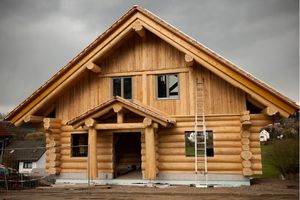 Logs have provided humanity with building material for centuries.
Logs have provided humanity with building material for centuries.
A frame is constructed with upright logs and then wood logs are laid one on top of each to make thick solid walls. The structure will compress slightly and become even more solid with the roof pressing down.
Related: Someone Is Sneaking Around Your House. What Do You Do?
How to build one? Prepare the ground, then lay the bearers. Place the first logs in the shape of your cabin. Make sure your window and door frames are in situ beside the appropriate walls.
Start laying the logs piled one on top of another and fit the windows. Fit the door and at this stage get the roof joists ready and secure these too. Hang the door and if your area is stormy, fit braces in preparation. After that, you can lay floorboards inside and start decorating.
The Multistory Pueblo Adobe House
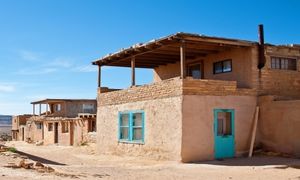 Adobe is another building material used in the Southwest of the US by Pueblo Native Americans.
Adobe is another building material used in the Southwest of the US by Pueblo Native Americans.
Adobe is an ancient building technique where the sun heats a sand and clay mixture in brick molds, which are baked in the sun.
The Pueblo community constructed buildings, historically one on top of the other so that community buildings could accommodate large numbers of people.
Another method was to use large stones in the construction and ensure they adhered to the building using clay and straw adobe material.
Sometimes dried dung or manure was also added to help the mid to shrink to fit the brick molds. The hot sun is essential for brick making, and adobe bricks look very different visually from clay-fired ones.
How to build one? Visit a Pueblo construction for the experience as they celebrate many festivals and invite the public to attend. There is one in Santa Fe if you live near there.
Related: How To Dig A Native American Dakota Fire Hole
Having seen what to aim for in real life, to make your bricks, you need to mix sand and clay with water, and then with straw and manure if using. This mixture needs to be poured into molds to make the bricks, and traditional methods use wooden molds.
Level the top of the surface with your hands or a scraper and then allow the bricks to bake in the sun. Once baked, carefully remove the bricks from the molds and lay them out to dry for 4 more weeks in the hot sun.
This air-dries the bricks well ensuring they are strong. Foundations are traditionally made with stones so take notes when you visit a Pueblo home.
Is It Cheaper To Build Your Own Home?
The typical saving for a home build varies between 20-40% cheaper than buying a new house. However, you still need to include materials, regulations, your time, and payment for any local taxes, etc.
Costs are determined by the actual materials used which are mainly available timber, stone, clay, straw, and animal dung.
So you can calculate these costs by visiting your local wood or stone merchant or if you are lucky enough to be able to access forest wood on your own property, costs will be decreased significantly.
Water is another issue. You may need to install piping and consider linking up to a local or national water supply in your local authority.
Time is the final cost; if you build your own house, then it is less but you may need to consider if you can afford not to work while you build.
If you use the services of carpenters, architects, and engineers then the costs will go up but will certainly be less than buying a finished property. You will also have the house of your dreams, not a prefabricated one.
So are you all fired up to start building your own home now? Remember that each state in the US has building regulations, and if you plan on building a permanent home you need to check with your local authority before you start.
Whether it is a stone build or a new cob house, make sure that your choice of design suits your climate.
You may also like:
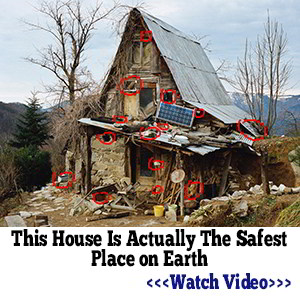 No-Electricity Cooking Techniques To Use During A Power Outage
No-Electricity Cooking Techniques To Use During A Power Outage
How To Build An Underground Bunker For Only $400 (Video)
Common Wild Plants You Never Thought Were Edible

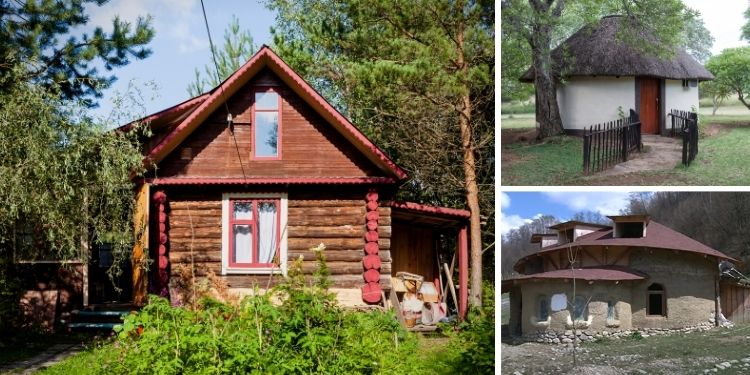













Thank you for an interesting article on a subject that could fill several books. If you move from ancient to more recent times like the settling of the great plains of America the build material that was available was sod. Sod homes, dugouts, adobe, rammed earth, earth sheltered are all variations I wish I had time to be involved with. I think I would be very comfortable in any of these.
Thank-you for an Informative article. One type of construction not mentioned is cordwood or stackwall construction. Think of this construction like stacked firewood with mortar or concrete (or a clay mix) used between the wood pieces. Although it isn’t primitive, it is several hundred years old. The earliest examples I am aware of are found in northern European countries like Switzerland and Sweden. There are some examples here in the US, primarily in areas like Wisconsin and Michigan. Modern construction uses concrete or mortar between the wood pieces that are cut to ” firewood” length of about 12 inches. The wood / mortar wall is stacked (almost like bricks). This construction is strong and fairly well insulated naturally.
I live in a small mud brick cottage. It’s cooler in summer and warmer in winter than ambient temperatures by a long shot. It was built by Irish settlers with short doorways and little windows as glass was expensive in those days. One of the outbuildings fell down a few years ago, the original kitchen dining building since they were always built separately due to the risk of fire and also meant the main house didn’t heat up so much in summer. Plumbing and electricity were retrofitted later as they became available. Plumbing is all on external walls and electricity comes in under the eaves and down the walls into each room. The walls are supported on stone foundations, even the interior walls.
Hallo, u bent bezig met reparatiewerkzaamheden, ik kan het gebruik van fotoplafond aanbevelen, omdat het een uitstekende keuze is voor koele verlichting. Visueel zal de ruimte groter lijken door meer licht en comfortabeler zijn.
Hello all Australians, I would like to recommend you the casіno . Licensed in Curacao, the casino follows strict rules to ensure a safe and secure gaming environment for all players. The use of state-of-the-art encryption technology protects my personal and financial information from unauthorized access, giving me peace of mind while playing. Therefore, I recommend you to try the excitement of this site for yourself.